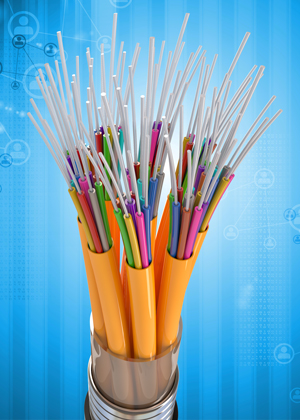The Internet is a marvelous network. It enables all of us to connect to any of us anywhere in the world and at a very reasonable cost. Why wouldn’t you use the Internet for all your communications? Much of the time we do, both for personal and business needs. It works great… well, it works just fine a lot of the time. There are a few snags, though.
 Network Priority
Network PriorityOne is priority for highly sensitive applications like interactive voice and video. Say, telephone calls. There is no priority. Your voice packets get the same treatment as your next door neighbors video stream or someone backup up files to the cloud. Get in line and take your turn. When things get too busy, called network congestion, your real-time stream may break up or stop completely for a short time.
Cloud Critical Applications
The same is true for business critical applications running in the cloud. If you are taking orders, interacting with a customer or needing fast answers to deal with rapidly moving situations you may be drumming your fingers as you wait for the system to respond. Trying to make a quick financial trade in the market? Maybe it executes immediately. Maybe not. You may or may not get the price you had in mind.
Network Security
Another issue is security on the Internet. There is none. If you want security, you need to add it yourself. That means encryption. A popular way to encrypt your traffic when out of the office is by using a VPN or virtual private network. This is end to end encryption that makes it safer to use public access points like WiFi in coffee shops or send sensitive documents across the Internet. SSL or, now, TLS encryption has made possible online shopping and banking with confidence using web browers over the Internet with or without a VPN.
Improving Performance with Private Lines
You can get better network performance with private lines. Think private road versus crowded superhighway. The idea is to limit the competition from other people’s traffic.
You can still use the Internet but make it run better with a private line called DIA or dedicated Internet access. This gives you a private, not shared, connection between your location and your Internet service provider. Of course the Internet core itself is still a shared resource, but most of the congestion is in the last mile where you and hundreds or thousands of other users share the same connection to the service provider.
Direct to the Cloud
A direct cloud connection is a private line between you and your cloud service provider. Since you are the only user on that line, your cloud services should run much more like they would if the servers were right down the hall in your building. This type of connection avoids the Internet and its vagaries completely.
Why not expand that concept to your own private WAN or wide area network? This means private lines to connect your offices, factories, data centers and branch locations or retail outlets. Think of it like having your LAN expand to include all of your other business locations. You have control of the traffic and no interference from other outside users. Both privacy and performance are improved.
Dark and Lit Fiber
So far we are talking about fiber optic services, likely Ethernet over Fiber, which is the most popular connection method today. These are “lit” fiber connections where the laser equipment that maintains the signal is owned and operated by a service provider. The ultimate in performance and privacy over metropolitan and wider areas is using “dark” fiber. Dark means the fiber strands that you lease have no termination equipment at either end. You are responsible for providing the equipment that “lights” the fiber and sets the protocol. Since the glass fiber strands have nearly unlimited bandwidth, you have tremendous ability to send traffic from point to point dependent only on your budget and technical staff.
Wireless Private Lines
Finally, there is a new type of wireless service called 5G private networking or 5G network slice that lets you have the advantage of private lines while portable or mobile. It’s something like your own private corporate WiFi, but over much wider distances. Coupled with fiber optic private lines for most of your traffic, private wireless can give you a comprehensive business network wherever you are.
Is private networking right for your business? Find out what private network and security options are available now.





